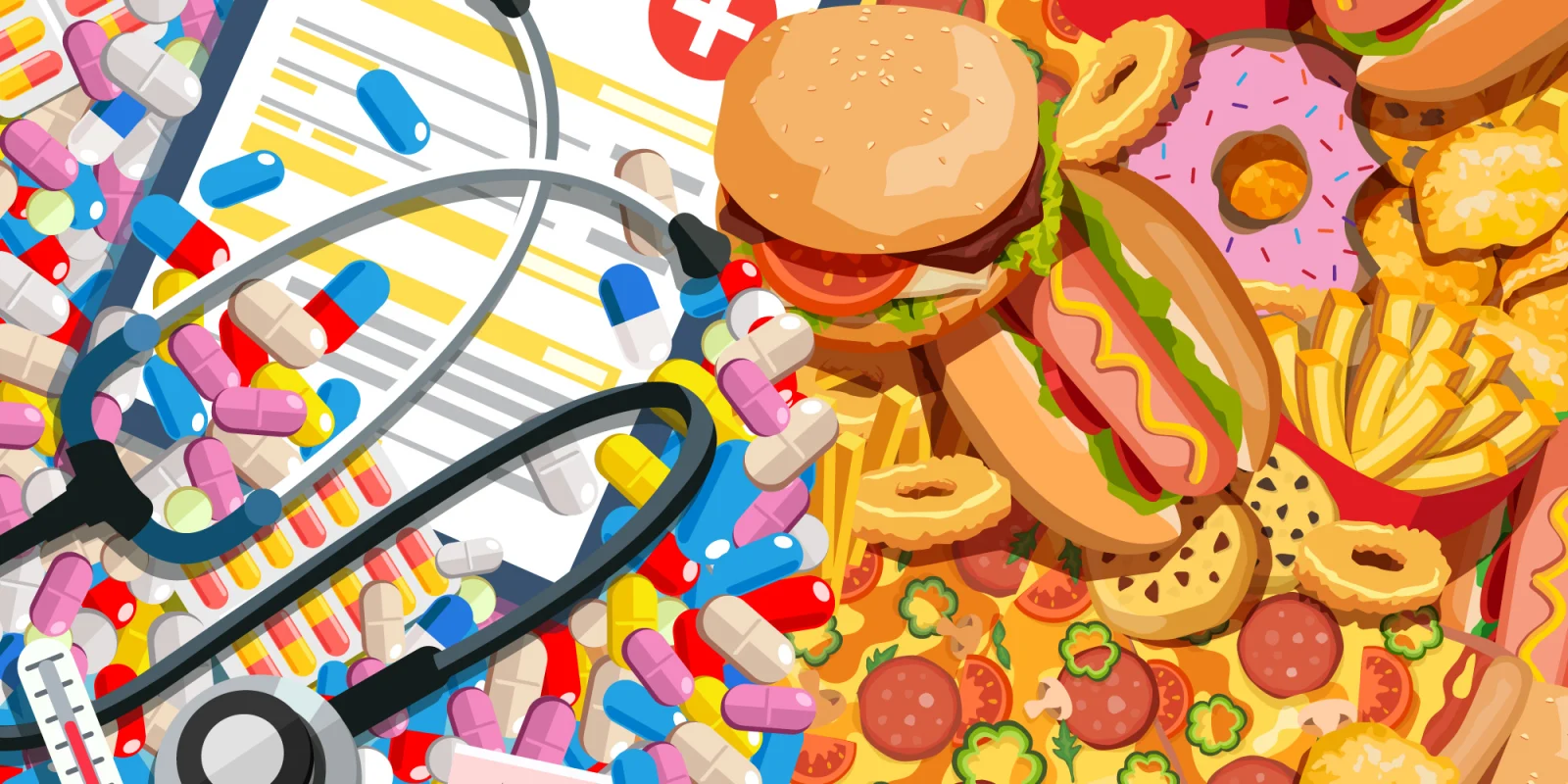
I heard over the counter, “Ask if 14 wants peppers and onions on his sandwich.” The other staff member, replied “Will do. Fifteen was asking if we have roast beef and sauerkraut.” From the opposite counter I heard, “Whole milk, extra gravy, ice cream. Got it?”
Is this a Philadelphia steak sandwich shop? No, it is the central station of a community hospital cardiac floor in a metropolitan suburb. And the dialogue? Snippets from cardiac nurses contacting the dietary department with round-the-clock food orders from their patients.
Food can be ordered at any time — just call room service. Walk into the lobby or even just out of a room and you have access to sugary drinks in 20 ounce plastic bottles from vending machines and café counters. The lounge has computer access, newspapers and, of course, sugary drinks and Philly Soft Pretzels. Is this a hotel stay? No, it is a suburban community hospital with a physician lounge. One of the fastest ways to get a sugary drink in the Philadelphia suburbs is to stop at a community hospital entrance and use the vending machines or snack/café counters ubiquitously located in the hospital lobby.
Other conversational snippets and observations from the cardiac floor:
- “I eat bacon and potatoes for breakfast, I don’t like fruit.” – A dedicated nurse who could not leave the cardiac floor for breakfast, after ordering a Styrofoam package from the hospital cafeteria containing multiple bacon slices and hashbrowns
- A dedicated cardiologist on weekend call showed his appreciation for the nurses by bringing donuts to the nursing station
Does it make sense that the hospital menu presented to patients and families includes Philly steak with cheese, hamburger, bacon and ham deli sandwiches, ice cream, carrot cake with cream cheese frosting, chocolate chip cookies, sugar cookies, lemon meringue pie, and chocolate cake? What do you say to a patient’s family that brings in fast food burgers or fried chicken — especially when they respond to your nudge toward healthy eating that they taste better than the cheesesteak and hamburger on the hospital menu?
I’ve discussed this with the hospital menu staff. The most frequent response I get is: “There are healthy choices with red hearts.” But when I ask why there are unhealthy choices? I’m given only a perpexled look.
Hospitalists and nurses sometimes say they are too busy to worry about what to eat. The routine post-procedure order for physicians at community hospitals is “regular diet” with no portion or choice restriction. Chiefs of Staff note that dietary choices (including bad ones) increase patient satisfaction scores — and how can a suburban community hospital score high if patients are not satisfied without hamburger or Philly cheesesteak options?
Hospital dietitians are aware of these issues but hospital food is controlled by the dietary administrator. Hospital administrators see food as a cost issue and are reluctant to waste hospital time, finances, and resources on delivering healthy food choices in an institutional setting. Rankings now exist for patients to compare hospitals on exactly these measures: cost, quality, and location. Should the ranking include something about which hospitals you can order unhealthy food from around the clock?
Other questions I have: Is there something ironic about the community hospital treating the complications of an unhealthy lifestyle? Is there something ironic about the community hospital pursuing complicated cardiac surgeries and interventional procedures in a low-volume setting while simultaneously offering patients and families sugary drinks and a menu listing Philly cheesesteak?
Media reports show that food systems in health care facilities are largely reliant on methods of production and distribution — methods that are misaligned with dietary guidelines and that negatively impact public and environmental health. A recent U.S. News & World Report article, for example, chronicled how unhealthy hospital food is. But whatever the reality, the public thinks, “It can’t be that bad, it’s served in the hospital.”
The mission of the community hospital should be to act as a role model for a healthy community. Health Care Without Harm, a coalition informed by the Healthy Food in Health Care Pledge, was formed to promote the health of people and the environment. It outlines steps the health care industry needs to take. 596 hospitals in the United States, and 11 in the Philadelphia area, signed the pledge to "first, do no harm” and treat food and its production and distribution as preventive medicine. A local Philadelphia area initiative, Good Food, Healthy Hospitals, similarly partnered with local hospitals to elevate nutrition standards for food purchasing, patient meals, cafeteria and on-site restaurant menus, catering menus, and vending.
Physicians and nurses have a role to play. Provider-supported strategies, like discussing healthy food initiatives, could drive hospital administrators to pursue a healthy hospital environment. Indeed, community hospitals in the United States are at a crossroads. Community hospitals could be models for healthy lifestyle choices. A good first step is to take Philly cheesesteaks off the menu.
John Fornace, DO is a noninvasive cardiologist located in the suburban Philadelphia area.






